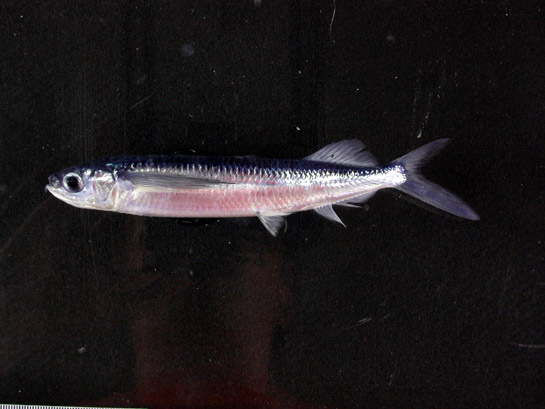|
Rhynchorhamphus Malabaricus
''Rhynchorhamphus malabaricus'' or Malabar halfbeak is a halfbeak of the family Hemiramphidae of the order Beloniformes. It is one of the four recognized species of the genus Rhynchorhamphus ''Rhynchorhamphus'' is a genus of halfbeaks. They are found in western Pacific Ocean, Pacific and Indian Ocean, Indian ocean. Species There are currently four recognized species in this genus: * ''Rhynchorhamphus arabicus'' Nikolai Vasilyevich P ... and can be found along the Western Indian Ocean, from southern India to Sri Lanka. References malabaricus Fish described in 1976 {{Beloniformes-stub ... [...More Info...] [...Related Items...] OR: [Wikipedia] [Google] [Baidu] |
Bruce Baden Collette
Bruce Baden Collette (born March 13, 1934) is an American ichthyologist. Biography He was born on March 13, 1934, in Brooklyn, New York. He is the son of Raymond Hill Collette and Agnes Hellen (Lavsen) Collette. Publications * ''The diversity of fishes : biology, evolution, and ecology'' (with Gene S. Helfman and Douglas E. Facey); Malden (Mass.) : Blackwell science, cop. 2009. * ''Results of the Tektite Program: ecology of coral reef fishes'' (with Sylvia Alice Earle); Natural History Museum, Los Angeles County, 1972. - Taxon named in his honor *The[...More Info...] [...Related Items...] OR: [Wikipedia] [Google] [Baidu] |
Halfbeak
Hemiramphidae is a family of fishes that are commonly called halfbeaks, spipe fish or spipefish. They are a geographically widespread and numerically abundant family of epipelagic fish inhabiting warm waters around the world. The halfbeaks are named for their distinctive jaws, in which the lower jaws are significantly longer than the upper jaws. The similar viviparous halfbeaks (family Zenarchopteridae) have often been included in this family. Though not commercially important themselves, these forage fish support artisanal fisheries and local markets worldwide. They are also fed upon by other commercially important predatory fishes, such as billfishes, mackerels, and sharks. Taxonomy In 1758, Carl Linnaeus was the first to scientifically describe a halfbeak, ''Esox brasiliensis'' (now ''Hemiramphus brasiliensis''). In 1775 Peter Forsskål described two more species as '' Esox'', '' Esox far'' and '' Esox marginatus''. It was not until 1816 that Georges Cuvier created the ... [...More Info...] [...Related Items...] OR: [Wikipedia] [Google] [Baidu] |
Hemiramphidae
Hemiramphidae is a family of fishes that are commonly called halfbeaks, spipe fish or spipefish. They are a geographically widespread and numerically abundant family of epipelagic fish inhabiting warm waters around the world. The halfbeaks are named for their distinctive jaws, in which the lower jaws are significantly longer than the upper jaws. The similar viviparous halfbeaks (family Zenarchopteridae) have often been included in this family. Though not commercially important themselves, these forage fish support artisanal fisheries and local markets worldwide. They are also fed upon by other commercially important predatory fishes, such as billfishes, mackerels, and sharks. Taxonomy In 1758, Carl Linnaeus was the first to scientifically describe a halfbeak, ''Esox brasiliensis'' (now ''Hemiramphus brasiliensis''). In 1775 Peter Forsskål described two more species as ''Esox'', '' Esox far'' and '' Esox marginatus''. It was not until 1816 that Georges Cuvier created the gen ... [...More Info...] [...Related Items...] OR: [Wikipedia] [Google] [Baidu] |
Beloniformes
Beloniformes is an order composed of six families (and about 264 species) of freshwater and marine ray-finned fish: * Adrianichthyidae (ricefish and medakas) * Belonidae (needlefish) * Exocoetidae (flyingfishes) * Hemiramphidae (halfbeaks) * Scomberesocidae (sauries) * Zenarchopteridae (viviparous halfbeaks) With the exception of the Adrianichthyidae, these are streamlined, medium-sized fishes that live close to the surface of the water, feeding on algae, plankton, or smaller animals including other fishes. Most are marine, though a few needlefish and halfbeaks inhabit brackish and fresh waters. The order is sometimes divided up into two suborders, the Adrianichthyoidei and the Belonoidei, although this clade is referred to as Exocoetoidei in the 5th edition of ''Fishes of the World''. The Adrianichthyoidei contain only a single family, the Adrianichthyidae. Originally, the Adrianichthyidae were included in the Cyprinodontiformes and assumed to be closely related to the ... [...More Info...] [...Related Items...] OR: [Wikipedia] [Google] [Baidu] |
Rhynchorhamphus
''Rhynchorhamphus'' is a genus of halfbeaks. They are found in western Pacific Ocean, Pacific and Indian Ocean, Indian ocean. Species There are currently four recognized species in this genus: * ''Rhynchorhamphus arabicus'' Nikolai Vasilyevich Parin, Parin & Yuri Nikolaevich Shcherbachev, Shcherbachev, 1972 (Arabian flyingfish) * ''Rhynchorhamphus georgii'' (Achille Valenciennes, Valenciennes, 1847) (Long-billed halfbeak) * ''Rhynchorhamphus malabaricus'' Bruce Baden Collette, Collette, 1976 (Malabar halfbeak) * ''Rhynchorhamphus naga'' Bruce Baden Collette, Collette, 1976 References Rhynchorhamphus, Hemiramphidae {{Beloniformes-stub ... [...More Info...] [...Related Items...] OR: [Wikipedia] [Google] [Baidu] |

